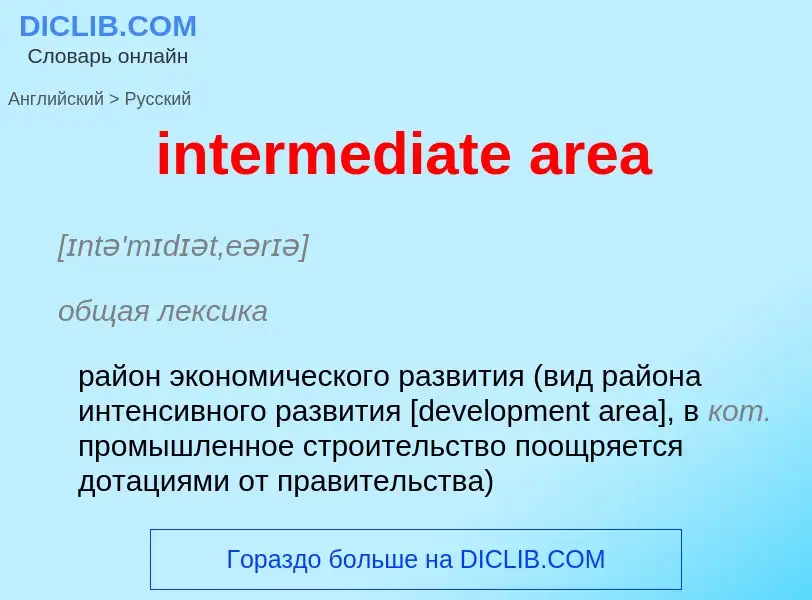Translation and analysis of words by ChatGPT artificial intelligence
On this page you can get a detailed analysis of a word or phrase, produced by the best artificial intelligence technology to date:
- how the word is used
- frequency of use
- it is used more often in oral or written speech
- word translation options
- usage examples (several phrases with translation)
- etymology
intermediate area - translation to English
[ɪntə'mɪdɪət,eərɪə]
общая лексика
район экономического развития (вид района интенсивного развития [development area], в кот. промышленное строительство поощряется дотациями от правительства)
дословная передача
промежуточный район
строительное дело
часть города, расположенная около делового района (с умеренным размером пешеходного движения и небольшой оборачиваемостью стоянок)
территория с благоприятными условиями для строительства
синоним
общая лексика
продукт реакции
Wikipedia

The Intermediate Area is an archaeological geographical area of the Americas that was defined in its clearest form by Gordon R. Willey in his 1971 book An Introduction to American Archaeology, Vol. 2: South America (Prentice Hall: Englewood Cliffs, NJ). It comprises the geographical region between Mesoamerica to the north and the Central Andes to the south, including portions of Honduras and Nicaragua and most of the territory of the republics of Costa Rica, Panama and Colombia. As an archaeological concept, the Intermediate Area has always been somewhat poorly defined.
Because it was not home to ancient state societies but was predominated by early chiefdoms at the time of the Spanish conquest, it was sometimes regarded as a kind of cultural backwater that contributed little to the emergence of Pre-Columbian civilization in the New World. However, recent archaeological research has demonstrated that this part of the Americas had some of the earliest agriculture, pottery, and metallurgy in the hemisphere.
Given new findings, it is likely to have played a critical role in the transmission of culture both to and between neighboring regions to the north and south. Recently, concepts such as that of the Isthmo-Colombian Area have been offered as an alternative to the Intermediate Area with the intention of creating a neutral term.



